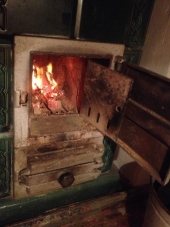








Freedom!




A human being should be able to change a diaper, plan an invasion, butcher a hog, conn a ship, design a building, write a sonnet, balance accounts, build a wall, set a bone, comfort the dying, take orders, give orders, cooperate, act alone, solve equations, analyze a new problem, pitch manure, program a computer, cook a tasty meal, fight efficiently, die gallantly. Specialization is for insects.
-Robert A. Heinlein




I don't think that the gasses off of a coffee bean would contain the volatile components that wood releases when biochar is made.












Freedom!








Chris Kott wrote:I think it would be worth trying the spent grounds in a pelletizer. If you could turn the spent grounds into pellets, they could at least function in equipment designed to burn pelletized material. You might have to tinker with either the formulation of a binding agent that perhaps oxidizes the pellet in combustion, or is an accelerant, or perhaps with the airflow on the stove, but the spent grounds would at least be in a convenient format to handle and combust with conventional equipment.
-CK
 1
1








I also write a blog (in Spanish) about urban cycling @ https://medebici.blogspot.com






